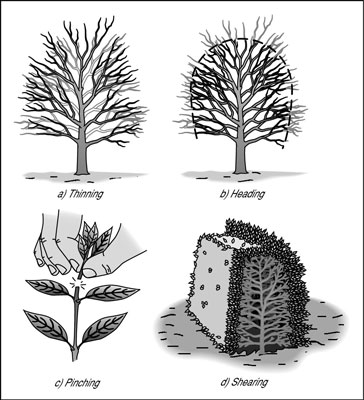 Ever wonder how people get their plants to appear so
perfect? There’s a trick to it – pruning. Pruning is basically training your
plant to grow the way you want it to. Its goal is to improve plant health,
appearance, and restrict certain growth.
Ever wonder how people get their plants to appear so
perfect? There’s a trick to it – pruning. Pruning is basically training your
plant to grow the way you want it to. Its goal is to improve plant health,
appearance, and restrict certain growth.
If you let a plant grow uninterrupted, it will usually grow straight up with little branching, resulting in a tall, lanky, weak and unsupported plant that will easily fall over. However, you can prune it to change this or encourage this.
To do it you will need something sharp, such as a knife,
scissors, or shears. The idea is to make a smooth, clean cut, at a 45º angle.
This allows the plant to heal quickly.
If you want to promote side growth, then prune the topmost new growth. You can cut the leaves or pinch them with your fingers. This will encourage the plant to send out side branches, resulting in a more uniform and bushy plant. If you want your plant to grow more vertically, prune the side growth by pinching them or cutting them off entirely.
If you want to promote side growth, then prune the topmost new growth. You can cut the leaves or pinch them with your fingers. This will encourage the plant to send out side branches, resulting in a more uniform and bushy plant. If you want your plant to grow more vertically, prune the side growth by pinching them or cutting them off entirely.

If you have a perennial plant, you will probably have to cut it back entirely before or after the growing season. That way, it will have new, strong growth later on. With flowers, you need to remove dead flowers to promote growth of new flowers. The same applies to fruiting plants – once the fruits appear and ripen, you should cut them off so that the plant will know to produce more fruit. Pruning also prevents plants from outgrowing their containers too rapidly.
Pruning can be done at anytime but the recommended time varies with the plants. Pruning at the wrong time will not kill the plant but it may weaken the plant. The best time for most plants (there are exceptions) is during late winter or early spring. Since pruning stimulates new growth, if you prune right before winter arrives, the new shoots may die due to the cold.

No comments:
Post a Comment